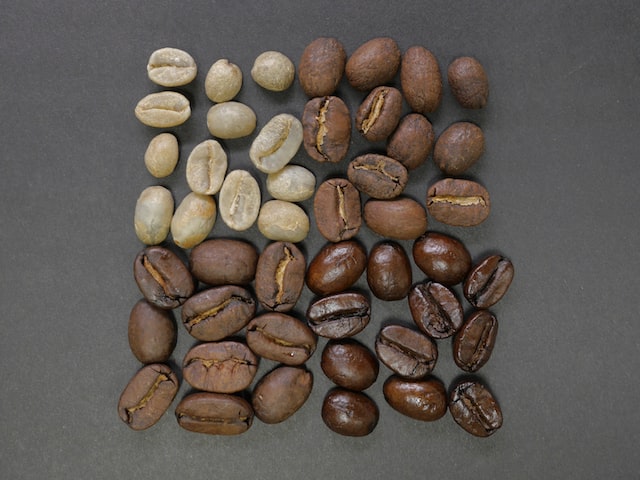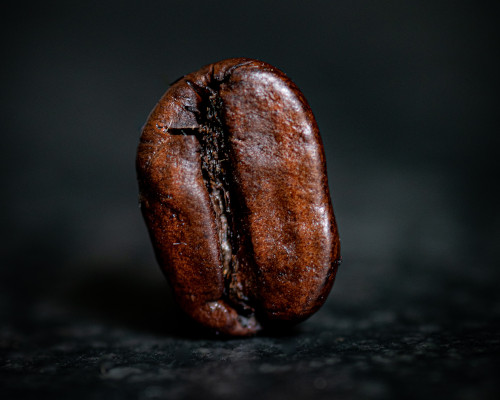Moisture is a pretty critical factor when it comes to brewing the perfect cup of coffee. So you may wonder how to remove excessive moisture from your coffee beans and whether there is a good way to dry out coffee beans at home.
But before you start to panic about how to dry your coffee beans – the first thing to ask yourself is if your coffee beans are really as wet as you imagine them to be!
Let’s explore this topic in more detail.
Why Coffee Beans Sometimes Look Wet

If you’ve recently been to the store and returned with an exciting new brand of premium coffee to try, your heart might have sunk when, upon opening the bag, you realized that they look unusually moist.
Having never encountered this before, you might imagine it’s a reason for concern. But, in reality, that wet-looking sheen might actually be a cause for celebration.
You see, all coffee beans contain natural oils that contribute to their wonderful flavor. Depending on the nature of the particular bean variety, many coffee beans hold quite a bit of this oil, which can rise to the surface of the bean during roasting.
Generally speaking, the darker the roast, the more of a “wet look” you’re likely to see.
If you are excited to investigate the powerful flavors of dark-roasted coffee, then you’ll likely encounter this moist, oily trait on your journey. If you do, rather than wondering how to remove moisture from coffee beans, you can instead focus on cranking up your grinder!
However, if you have picked up a light-roasted bean and it looks wet, that could indeed be something to worry about…
How Moist Should Unroasted Coffee Beans Be?
When coffee beans are harvested, they usually contain around 45-55% moisture. The next step between the coffee plant and your cup is for the beans to be air dried, which takes quite some time—potentially a week or two—and will result in a water content of 10-12%.
This level of moisture means that the beans are stable enough to transport, but still have enough moisture locked inside to provide fantastic flavor when the beans are roasted after reaching their destination.
Whether green or already roasted, too much moisture raises a real hygiene concern. Mold can grow quickly on damp coffee beans, ruining the whole batch or making coffee drinkers unwell.
On the other side of the equation, however, coffee beans that become too dry will begin to lose their aroma and flavor pretty quickly.
Moisture Control: Storing Coffee Beans Correctly
Before we get on to how to remove moisture from coffee beans, it’s time for a quick note on coffee bean storage.
After bringing home fantastic coffee beans—whether you buy them green or ready-roasted—it is vital to store them appropriately until use.
Exposure to light, or temperature and moisture fluctuations, won’t do your coffee any favors, so choose opaque air-tight containers or store vacuum-sealed bags in a cool dark cupboard.
If you put your green coffee beans in the freezer, divide them up into batches first so you’re not constantly removing and replacing the whole lot, which can encourage condensation.
How to Remove Water From Coffee Beans
But what if a catastrophe occurs? What if you’ve accidentally poured water into your coffee bean jar, or worse, into the top of the bean hopper? Well, first things first, while you can quickly roast damp green beans to rescue them, never try to grind roasted beans, as this will clog up your grinder pretty quickly.
If you quickly notice that your coffee beans have got wet, you can lay them out on a tray in the oven and set it to a very low temperature to slow-dry the beans.
As soon as you begin to smell a coffee aroma, whisk the beans out of the oven and hope that they’ll still taste as good as they originally would have.
However, if you don’t notice that your beans have got wet until some time has passed, it’s sadly time to wave goodbye to that particular patch. Unfortunately, the molds that grow on wet coffee will not only ruin the flavor of the beans but could give you an upset stomach too.
If in doubt, it’s better not to take the risk and head to the store for a new bag of coffee instead.
FAQ – How to Remove Moisture From Coffee Beans
If you notice that your coffee beans have gotten wet, you can lay them out on a tray in the oven and set it to a very low temperature to slow-dry the beans. As soon as you begin to smell a coffee aroma, take them out! Voila, you’ve got dry beans again!
Keep them out of light and store them in opaque air-tight containers or store them in a vacuum-sealed bags in a cool dark cupboard. If you put your green coffee beans in the freezer, divide them up into batches first so you’re not constantly removing and replacing the whole lot as it will encourage condensation.
When coffee beans are harvested, they will contain around 45-55% moisture. The next step is for the beans to be air dried which can take quite some time, up to two weeks. This will bring the beans to a water content of around 10-12%.
All coffee beans contain natural oils that contribute to their flavor. Some beans hold a fair amount of this oil, which can rise to the surface of the bean during roasting. Generally, the darker the roast, the more of a “wet look” you’re likely to see on the surface of the coffee bean.

Hi, I’m Megan! I love coffee – especially cappuccino – and spending time with my kids. When I’m not busy being a mom, I enjoy reading magazines (or just about anything that interests me) and swimming. In fact, I used to be a swimmer in college!


Leave a Reply